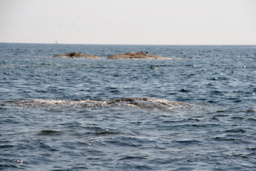
Morten Baltzersen tiltrådte stillingen som finanstilsynsdirektør for litt over en uke siden. Her er hans første kronikk som stod på trykk i Dagens Næringsliv for tre dager siden. Hans nesten 800 ords kronikk følger i forgjengernes fotspor og også hva OECD har å si om den norske økonomien på tilsynssiden.
Utfordringer for Norge – Finanstilsynet: «Internasjonale finansmarkeder er igjen rammet av uro. Denne gangen er uroen først og fremst knyttet til statsfinansielle ubalanser i USA og Europa. Tillit er en nødvendig forutsetning for velfungerende finansmarkeder. Når det ikke er alminnelig tillit til at stater kan oppfylle sine finansielle forpliktelser, kan det få alvorlige samfunnsmessige konsekvenser. Handlingsrommet i den økonomiske politikken blir da svært begrenset. Nødvendige tiltak for å gjenopprette bærekraftige statsfinanser og tilliten til statens betalingsevne kan føre til en langvarig og betydelig underutnyttelse av produksjonskapasiteten i de berørte landene.
Norsk økonomi går godt. Den internasjonale finanskrisen høsten 2008 førte til et begrenset og kortvarig tilbakeslag. Solide statsfinanser, solide finansinstitusjoner og, ikke minst, særtrekk ved vår næringsstruktur bidro til dette. Den høye temperaturen som preget norsk økonomi før finanskrisen høsten 2008, kom raskt tilbake. Det kommer bl.a. til uttrykk i sterk vekst i boligpriser og husholdningsgjeld.
En ny internasjonal finansuro vil få konsekvenser for norsk økonomi på ulike måter. Dersom de internasjonale pengemarkedene på nytt skulle tørke inn, slik det skjedde høsten 2008, vil norske banker bli berørt. I lys av erfaringene etter Lehman-konkursen har norske banker nå bedret sin likviditetssituasjon, og etableringen av et marked for obligasjoner med fortrinnsrett har bidratt til å lette bankenes finansieringsmuligheter. Ved en eventuell langvarig svikt i internasjonale penge- og kapitalmarkeder, er det likevel vanskelig å unngå at dette også rammer det norske markedet.
Norsk økonomi vil bli berørt ved et eventuelt nytt, kraftig internasjonalt tilbakeslag. Utslagene hos oss vil særlig avhenge av utviklingen i energi- og råvaremarkedene. Et betydelig fall i prisene på olje og annen norsk vareeksport vil direkte og indirekte ramme en stor del av norsk næringsliv og resultere i redusert lønnsomhet og etterspørsel. Samtidig kan vi få en lang periode med svært lave renter internasjonalt. Norsk rente påvirkes av internasjonale renter. Et fortsatt lavt rentenivå vil isolert sett stimulere innenlandsk etterspørsel i Norge. Vi vil i så fall i en periode kunne oppleve en todelt konjunktur, der skjermet virksomhet ekspanderer, mens konkurranseutsatt virksomhet bygges ned. En slik utvikling vil gi vanskelige avveininger i den økonomiske politikken.
Uavhengig av den internasjonale utviklingen, er husholdningenes gjeld og boligprisene en mulig kilde til ustabilitet. Husholdningenes samlede gjeld vokser fortsatt betydelig og er kommet opp på et høyt nivå. Dersom dette fortsetter, kan det lett ende i en brå og kraftig gjeldskonsolidering i husholdningssektoren, som vil få store ringvirkninger i hele økonomien. Jo lenger dette pågår, jo kraftigere blir den påfølgende etterspørselsreduksjonen.
Som Norges Bank understreket etter det siste rentemøtet, er den videre utviklingen i internasjonal økonomi svært usikker. Det er også mulige effekter på norsk økonomi. Finanstilsynet retter særlig oppmerksomhet mot den påvirkning utviklingen i norsk og internasjonal økonomi kan få for norske finansinstitusjoner, og samspillet mellom finansinstitusjonenes risikotilpasning og realøkonomien.
Endringer i finansinstitusjonenes kredittvurderinger har stor betydning for konjunkturene. Gjeldskriser kan arte seg ulikt i omfang, tid og form. Noe er likevel grunnleggende: I gode tider kan både låntakere og långivere bli for optimistiske, inntil det brått snur til overdreven pessimisme hos begge. Det er også klar lærdom: Solide finansinstitusjoner er avgjørende for å dempe utslagene av strukturelle og konjunkturelle skift i økonomien, og soliditeten bør bygges opp i gode tider. Økt soliditet i oppgangstider kan bidra til nøkterne kredittvurderinger, og ikke minst vil det gjøre institusjonene bedre i stand til å tåle tap og opprettholde utlånskapasiteten i nedgangstider. Lærdommen er reflektert i Basel-komitéens forslag til nye kapitaldekningsregler (Basel III), som vil ligge til grunn for nye krav i EØS-området. Der både skjerpes kravene til kapitaldekning, og det anbefales konjunkturavhengige kapitalkrav. I tillegg skjerpes kravene til likviditet og stabil finansiering.
Den norske finansnæringen er solid. Sammen med en sterk norsk økonomi og gode statsfinanser gir det oss et godt utgangspunkt for å møte utfordringene som den internasjonale finansuroen fører med seg. Samtidig har vi en liten, åpen økonomi som er sårbar. Selv om usikkerheten i internasjonale finansmarkeder og verdensøkonomien er stor, er det fortsatt høy temperatur i norsk økonomi. Det gir grunn til å bygge opp ytterligere soliditet i finansnæringen.
Krav om robust kapitaldekning i finansnæringen er både i samfunnets og den enkelte finansinstitusjons langsiktige interesse. Fra den enkelte institusjons ståsted kan likevel den forretningsmessig optimale egenkapitaldekning vurderes å være lavere enn myndighetenes krav og ambisjoner. Dette kan bl.a. skyldes at den enkelte institusjon ikke fanger opp all samfunnsøkonomisk betydning og ringvirkning av egne aktiviteter.
De nordiske finansmarkedene er knyttet nært til hverandre. Nordiske institusjoner konkurrerer og har betydelige aktivitet i nordiske naboland. Både av hensyn til reguleringseffektivitet og til gode konkurranseforhold, ville det være en fordel om de nordiske land kan komme fram til stor grad av felles tilnærming når nye soliditets- og likviditetskrav skal innføres i EØS.»
(Via Finanstilsynet.)
Hele den finansielle diskusjonen fra den utøvende makt er gjennomsyret av ‘føre var’ prinsippet. Norge har levd godt på dette prinsippet og vil fortsette å gjøre det.


 Nedgang i konstruksjon, nedgang i inflasjon (teknisk kalt disinflasjon), lite overskudd i handelsbalansen (men det er bare fordi importen har falt mer enn eksporten),
Nedgang i konstruksjon, nedgang i inflasjon (teknisk kalt disinflasjon), lite overskudd i handelsbalansen (men det er bare fordi importen har falt mer enn eksporten),  Hvis du hører noen si at president Obama har skapt jobber, så er det enkle svaret at det rett og slett ikke er nok til å holde følge med befolkningsveksten.
Hvis du hører noen si at president Obama har skapt jobber, så er det enkle svaret at det rett og slett ikke er nok til å holde følge med befolkningsveksten.